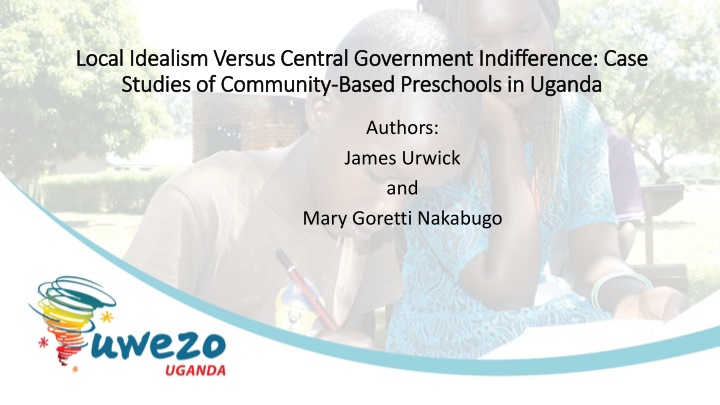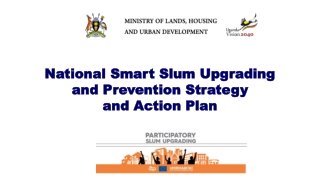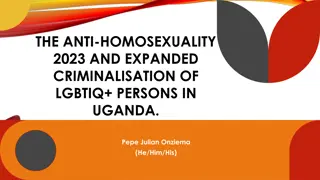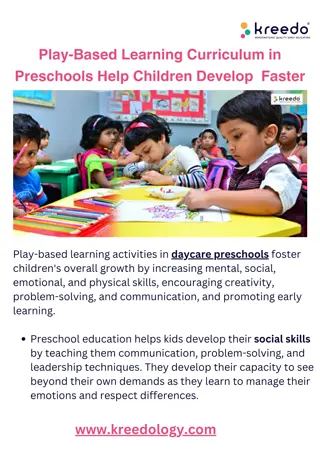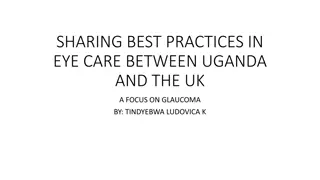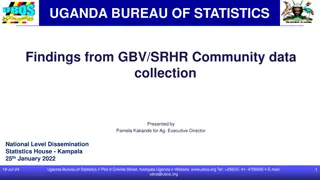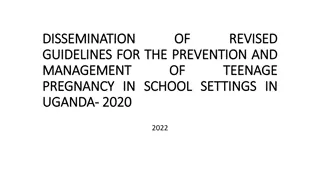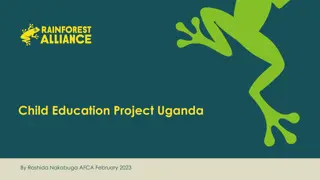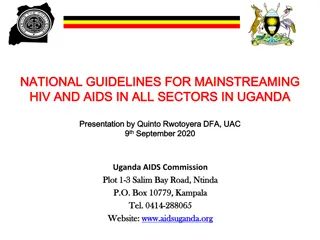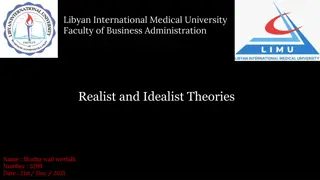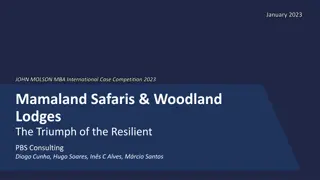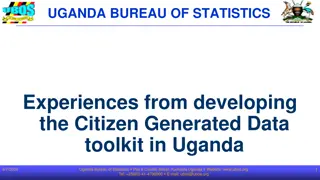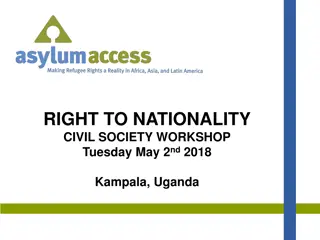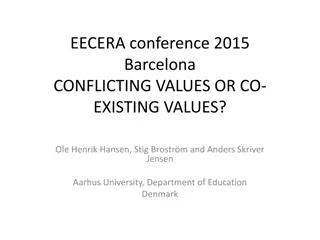Local Idealism vs Central Government: Community-based Preschools in Uganda
This case study explores contrasting themes in social service provision in Uganda, focusing on community-based preschools, challenges in ECCE provision, growing demand for ECCE, and advantages of community-based approaches in fostering wider access and accountability.
Download Presentation

Please find below an Image/Link to download the presentation.
The content on the website is provided AS IS for your information and personal use only. It may not be sold, licensed, or shared on other websites without obtaining consent from the author.If you encounter any issues during the download, it is possible that the publisher has removed the file from their server.
You are allowed to download the files provided on this website for personal or commercial use, subject to the condition that they are used lawfully. All files are the property of their respective owners.
The content on the website is provided AS IS for your information and personal use only. It may not be sold, licensed, or shared on other websites without obtaining consent from the author.
E N D
Presentation Transcript
Local Idealism Versus Central Government Indifference: Case Local Idealism Versus Central Government Indifference: Case Studies of Community Studies of Community- -Based Preschools in Uganda Based Preschools in Uganda Authors: James Urwick and Mary Goretti Nakabugo
Contrasting themes in social service provision Initiatives of the developmental state , replacing or co-opting local efforts Illustrated by many UPE programs Local community initiatives with minimal external support Illustrated here by community based preschools in Uganda For a relevant model related to poverty reduction, see Adrian Leftwich (2008). ( Preschools here describes nursery schools and ECD centres .)
The provision of ECCE in Uganda, for children The provision of ECCE in Uganda, for children aged 3 aged 3- -6: 6: Provision is explicitly left to private providers (Education Act of 2008) Many households cannot afford preschool fees The quality of the service is very varied Much of the training of staff is left to private providers Regulation and supervision is weak: many preschools are not registered or officially recorded
Growing popular demand for ECCE: some statistics Increase of registered pre-primary schools (Min. of Ed. & Sports): Year No. schools Widely differing NERs according to source, for 2016/17: Source: NER for ages 3-5 2007/08 703 MoES 15% (probably limited to registered schools) 2012/13 4,092 UNHS 43% 2017/18 7,210
Children Aged 6 Children Aged 6- -14 Est. Percentages 14 Est. Percentages by Years of Preschool Experience ( by Years of Preschool Experience (Uwezo Uwezo 2018) 2018) No. Years 0 1 2 3+ Total Percentage 38.3 12.7 17.2 31.8 100.0
Advantages of community based Advantages of community based approaches approaches Potential for a realistic and graduated fee structure to achieve wider access. Stronger local accountability of management and staff. Potential for public subsidy. Potential for linkage with other services: health, social development.
Common characteristics of the 4 preschools we studied (2 rural and 2 urban) 1. Origin in local community initiative. 2. Non-profit management by a centre management committee or school management committee. 3. Low fees and low contribution requirements. 4. No restrictions by religious denomination. 5. Supportive educational officials (district level).
Strategies / improvisations used in our cases 1. Allocation of a primary school classroom block for the preschool (in 3 cases). 2. Community construction of buildings (1 case). 3. Fund-raising and NGO aid for start-up. 4. Volunteer teachers and cooks (2 cases). 5. Feeding programs with contributions in kind (3 cases). 6. Parental contribution of hygiene materials (all cases). 7. Home-made toys contributed by parents (1 case).
Central government indifference some indicators 1. Continuing unwillingness to subsidise ECCE. 2. Non-adoption of a new draft policy for ECCE (developed in 2017- 18), which calls for equitable provision and selective subsidies. 3. Focus of national officials on preschools supported by large agencies (e.g. BRAC, the Madrasah Early Childhood Program, LABE, UNICEF). 4. Lack of interest in volunteer teachers and their potential benefits. 5. Out-of-date guidelines, e.g. 20 children per adult.
And more indicators of indifference: 6. Attempt to include ECCE in a new degree requirement for teachers difficult for preschools to meet. 7. Prolonged closure of preschools during the Covid-19 pandemic, without clear evidence that it was necessary.
How relevant is a strategy of problem-driven iterative adaptation (Andrews et al. 2012)? In favour: Local initiatives such as feeding programs and the use of volunteers could contribute to a pragmatic sharing of costs between the state and local providers. Revised guidelines could recognise local realities. Against: The central government has not shown a clear willingness to share costs. This is not a capability trap . A stronger commitment by the state to support ECCE is necessary for more equitable educational outcomes in Uganda.
Thank you! Thank you! Contact Us! Uwezo Uganda, Corner House, Suite B1 Plot 436/437, Mawanda Road Kamwokya, Kampala P.O Box 33275, Kampala, Uganda Tel: +256-393-193-441 E-mail: info@uwezouganda.org https://uwezouganda.org/
